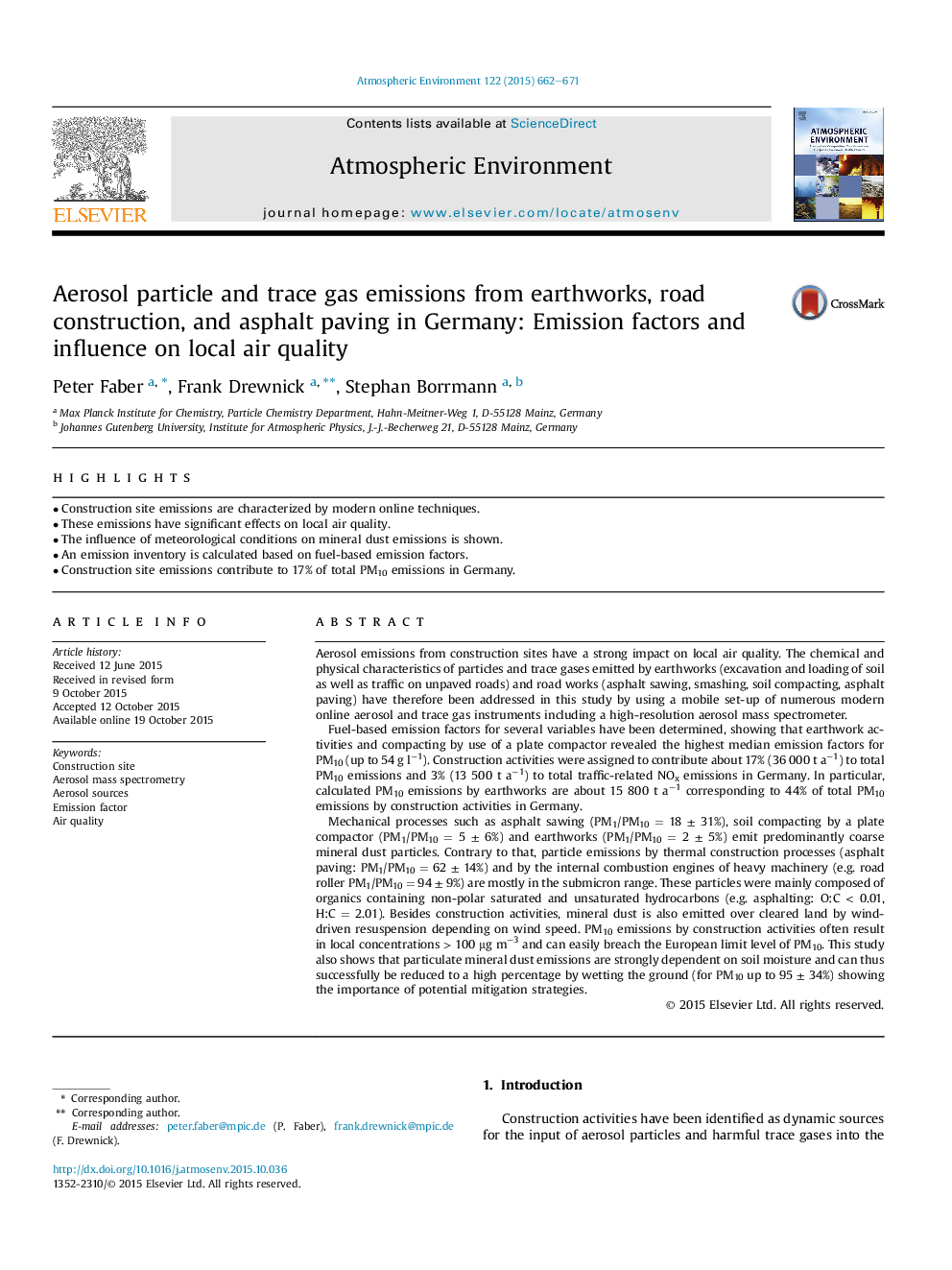| Article ID | Journal | Published Year | Pages | File Type |
|---|---|---|---|---|
| 6337078 | Atmospheric Environment | 2015 | 10 Pages |
Abstract
Mechanical processes such as asphalt sawing (PM1/PM10 = 18 ± 31%), soil compacting by a plate compactor (PM1/PM10 = 5 ± 6%) and earthworks (PM1/PM10 = 2 ± 5%) emit predominantly coarse mineral dust particles. Contrary to that, particle emissions by thermal construction processes (asphalt paving: PM1/PM10 = 62 ± 14%) and by the internal combustion engines of heavy machinery (e.g. road roller PM1/PM10 = 94 ± 9%) are mostly in the submicron range. These particles were mainly composed of organics containing non-polar saturated and unsaturated hydrocarbons (e.g. asphalting: O:C < 0.01, H:C = 2.01). Besides construction activities, mineral dust is also emitted over cleared land by wind-driven resuspension depending on wind speed. PM10 emissions by construction activities often result in local concentrations > 100 μg mâ3 and can easily breach the European limit level of PM10. This study also shows that particulate mineral dust emissions are strongly dependent on soil moisture and can thus successfully be reduced to a high percentage by wetting the ground (for PM10 up to 95 ± 34%) showing the importance of potential mitigation strategies.
Related Topics
Physical Sciences and Engineering
Earth and Planetary Sciences
Atmospheric Science
Authors
Peter Faber, Frank Drewnick, Stephan Borrmann,
